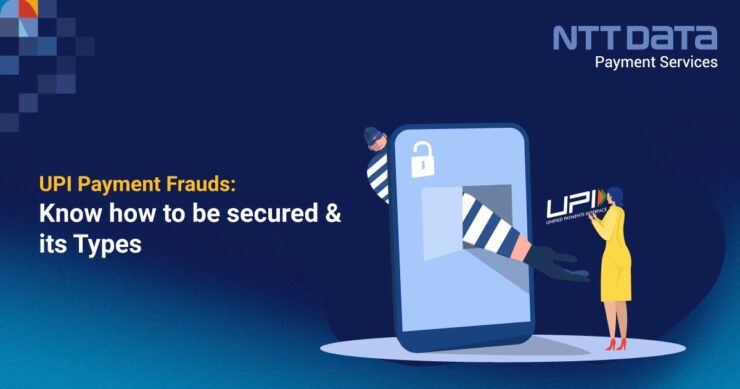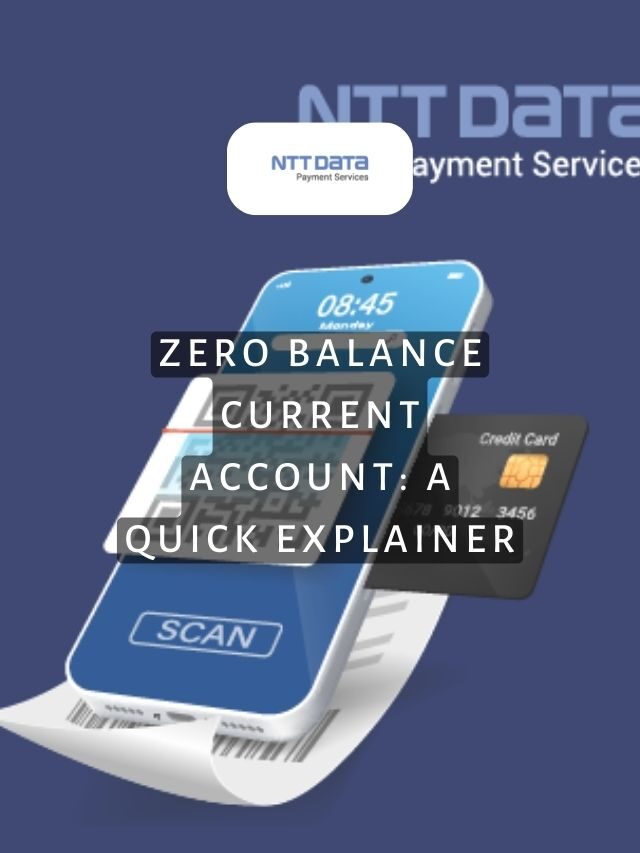
Table of Contents
- 1 Understanding UPI Payments
- 2 Recent Web Stories
- 3 What is UPI Payment?
- 4 What is UPI Fraud?
- 5 Types of UPI Payment Fraud
- 6 Tips To Secure Yourself From UPI Payment Fraud
- 6.1 1. Install Authorised Apps:
- 6.2 2. Beware of Phishing Links:
- 6.3 3. Secure Your SIM Card:
- 6.4 4. QR Code Caution:
- 6.5 5. Educate Yourself:
- 6.6 6. Avoid Public Wi-Fi for Transactions:
- 6.7 7. Use Strong Authentication:
- 6.8 8. Monitor Your Accounts:
- 6.9 9. Never Share Confidential Information:
- 6.10 10. Enable Transaction Limits:
- 7 Secure Your Digital Payments With NTT DATA Payment Services
- 8 Securing Your UPI Payments From Frauds
- 9 UPI Payment Fraud: FAQs
UPI has redefined the way individuals and businesses engage in and make financial transactions. However, this rapid digitisation has not come without its share of challenges, foremost among them being the concerning rise of UPI payment fraud. You must be aware of six types of UPI payment fraud, and there are 10 significant ways to protect yourself from these payment frauds.
Listen to the latest discussion on “Digital payment FRAUD and companies battling against it.” Join the discussion with Economic Times & Rahul Jain, CFO of NTT DATA Payment Services.
Let’s explore the types of UPI payment fraud and discover the methods to secure yourself from this UPI payment fraud.
Understanding UPI Payments
Our online transactions are increasing daily, thanks to UPI for making seamless transactions possible. As more people are switching to the UPI mode of payment, there are more UPI fraud cases in India now.
Understanding UPI and how fraudsters make use of this platform to defraud people is significant since it is vital to be aware of these online scams. Let’s uncover how to protect your account against UPI fraud.
Recent Web Stories
What is UPI Payment?
The Unified Payments Interface (UPI) is a sophisticated real-time payment system that facilitates seamless financial transactions in India. Through mobile applications, individuals and businesses can instantly transfer money between bank accounts. Users may initiate payments, receive funds, and manage their accounts with astonishing speed and convenience thanks to UPI, which bridges different banks and financial institutions.
What is UPI Fraud?
UPI needs to be completely secure because it is one of the pillars of the digital economy. UPI has recently been one of the most favoured payment methods, with UPI transactions reaching an all-time high this year. Therefore, because of its popularity and widespread use in the digital world, UPI fraud, UPI scams, and hacking are more likely to occur. UPI fraud occurs when scammers access your account and take your money or private information.
Types of UPI Payment Fraud
Here are the types of UPI payment fraud that can happen in the online digital payment world.
1. Phishing:
Phishing is a commonly used technique that enables fraudsters to create fake UPI payment links or other harmful links or apps that can duplicate a legitimate platform. Users are then baited into sharing their confidential information, such as UPI PINs or login credentials. Using these details, they can initiate unauthorised transactions.
2. SIM Card Swapping
Criminals can swap the victim’s SIM card through telecom providers to access their mobile number. With control over the victim’s phone number, fraudsters can intercept One-Time-Passwords (OTP) and access their personal UPI account.
3. Vishing (Voice Phishing):
In vishing attacks, scammers impersonate bank representatives or customer support and convince victims to share their confidential information over the phone. This information is then used to gain unauthorised access to UPI accounts.
4. QR Code Tampering:
Genuine QR codes can be tampered with illegally by scammers, who then redirect funds to their own accounts rather than the intended recipient. This happens when customers can unknowingly display QR codes in public places and authorise scammed transactions.
5. Remote Access Trojan Attacks (RAT):
RATs are malicious software that allows hackers to gain control over a victim’s mobile device. Once compromised, hackers can gain access to their UPI apps and initiate transactions without the victim’s knowledge.
| Did you know? The National Payments Corporation of India (NPCI), the organisation that created UPI, claims that the total number of UPI transactions topped 3 billion in a single month, demonstrating this ground-breaking payment system’s astonishing pace and adoption. |
Tips To Secure Yourself From UPI Payment Fraud
Here is a list of 10 types that you must follow to secure yourself from UPI payment fraud.
If you ever made a UPI transaction by mistake and wish to get your money back, here’s how. Click here.
1. Install Authorised Apps:
Install UPI apps that are available in the Play Store or Appstore to have better authenticity. Always verify the developer’s information before downloading it.
2. Beware of Phishing Links:
Always double-check the sender’s information before clicking any URL sent to you via email, SMS, or social media. Never share your sensitive information such as UPI PINs, personal information, or passwords.
3. Secure Your SIM Card:
Contact your telecom provider to enable advanced security measures like SIM card locking and Two-Factor Authentication (2FA) for SIM-related activities.
4. QR Code Caution:
When scanning QR codes, ensure they belong to trusted sources. Check for any tampering or irregularities in the QR code’s appearance.
5. Educate Yourself:
Keep up with the most recent fraud trends and methods. Read the security updates provided by your bank or other financial institution on a regular basis.
6. Avoid Public Wi-Fi for Transactions:
Wi-Fi networks in public places are more prone to hacking. Only use private, secure networks while doing UPI transactions.
7. Use Strong Authentication:
Enable strong PINs or biometric authentication for UPI applications. Avoid using PINs or passwords that are easy to guess.
8. Monitor Your Accounts:
Watch your UPI transaction history carefully. Any unauthorised transactions must be reported immediately to your bank.
Never provide your UPI PIN, OTPs, or login information to anyone, even if they identify themselves as representatives from your bank.
10. Enable Transaction Limits:
For your UPI transactions, set transaction limitations to reduce possible losses in the event of fraud.
| Did you know? The Unified Payments Interface (UPI) was developed by the National Payments Corporation of India (NPCI) on April 11, 2016. The NPCI is an organisation that was established to promote digital payments and provide various payment and settlement systems in India. |
Secure Your Digital Payments With NTT DATA Payment Services
You can secure all your digital UPI payments with NTT DATA Payment Services. Access PCI DSS 3.2.1V, a 256-bit encrypted payment gateway for your digital wallet. This keeps your information bulletproof and makes your transactions limitless and quicker.
NTT DATA Payment Services offers a complete payment solution to advance your offline and online businesses from,
- Payment Gateway India
- POS machines
- IVR payments
- Mobile applications, and
- Bharat QR Scan and Pay
We ensure maximum comfort, convenience, and safety for all your payments.
Securing Your UPI Payments From Frauds
While consumers may easily make purchases with a click, scammers can take advantage of this capability more easily. Staying away from strangers who could approach you and request sensitive information is one of the best ways to prevent falling victim to fraud and scams.
Simply do not respond to
- SMS without verified links
- Calls from any representatives, if you aren’t aware,
- Individuals asking for your personal and confidential information
- Any social media accounts asking for your personal details
- Any unauthorised application
Simply avoiding any transaction, call, etc., that you haven’t initiated will be sufficient for you to maintain your UPI account’s security.
| Also, you can get frequent updates on nttdatapayments Instagram page. |
UPI Payment Fraud: FAQs
- What are the types of UPI fraud?
Here are five types of UPI fraud
- Phishing
- SIM Card Swapping
- Vishing
- QR code tampering
- Remote Access Trojan Attacks
- What is UPI and its types?
UPI stands for Unified Payments Interface (UPI). It is a technology that integrates multiple banking services, seamless fund routing, and merchant payments into a single mobile app that can be used by any bank that participates. It also supports “Peer-to-Peer” requests, which may be planned and paid for according to convenience and necessity.
- Which UPI is safe and secure?
Here is a list of trusted UPI service providers that are safe and secure:
- PhonePe
- Google Pay
- Paytm
- Amazon Pay
- How can we protect UPI from hackers?
The simplest and most robust way to protect UPI attacks from hackers is to set a strong UPI PIN and never share it with anyone. Fraudsters will have a tougher time guessing or accessing your account if you use a strong UPI PIN.
- How are UPI transactions secured?
Users may use their bank account as a wallet with a streamlined two-factor verification process, eliminating the need to keep money in another wallet. Because sharing credentials is not necessary while using a virtual ID, it is more secure.






